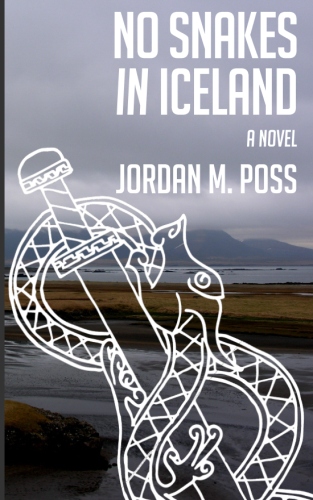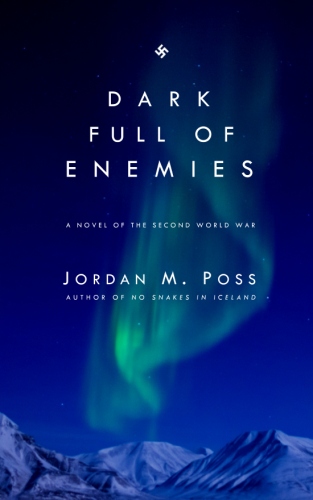The Magic of Silence
/As I’ve previously noted, since reading Rembrandt is in the Wind late last year I’ve been making an effort to learn about some of my favorite artists more deliberately. Having grown up with an artist grandmother, surrounded by her art and that of the artists who inspired her, and learning from an early age to love and appreciate it, I discovered through that book how much I’ve taken for granted through simple complacency.
This book by Florian Illies, The Magic of Silence: Caspar David Friedrich’s Journey through Time, came my way at exactly the right time. Recently translated from German, this is a study of the great German Romantic landscape artist.
A native of the Baltic port city of Greifswald, Friedrich was the son of a candlemaker and only slowly achieved success as a painter. He unsuccessfully sought the patronage of Goethe, who apparently found him annoying, but eventually sold paintings to the Prussian and Russian royal families. Quiet, deeply religious, and a staid creature of habit, he spent most of his life in Dresden, from which he traveled back and forth to his hometown on the Baltic coast and such islands as Rügen, and married late. By the time he died in 1840 he left behind a widow and three children as well as hundreds of sketches and canvases.
Friedrich was then, for over sixty years, almost totally forgotten.
Illies approaches Friedrich’s life and work thematically, through the four classical elements: fire, earth, water, and air. This proves a stimulating and surprising approach. “Fire,” quite movingly, opens with the loss of hundreds of German Romantic paintings in a gallery fire in Munich, and Illies provides numerous other examples of Friedrich works lost to fire, whether an accidental housefire at his family’s tallow rendering shop back home in Greifswald or in the RAF bombing of Dresden. “Water” examines this Baltic coast native’s use of the sea, especially at dusk—or is it morning?—and “Earth” the power of his landscapes, which pieced together landmarks from real places to create imaginary forests, ruins, and mountain ranges more real than their antecedents.
Certain themes recur: loss, faith, nature, the melancholy of Friedrich’s work, which features so many stark landscapes, cemeteries, and ruins, and his place in the nascent German nationalism of the time, for which he later, unwittingly, became the posterboy. The personal stories are especially moving, such as a childhood incident related in “Water”; one winter as a child, Friedrich fell through the ice on a frozen river. His brother jumped in to save him and, despite hauling Friedrich to safety, was himself drowned beneath the ice.
What can this have done to Friedrich the boy? How did it affect Friedrich the man? Illies speculates cautiously, but makes it always clear that there is much about the reticent, closed off Friedrich that we cannot know. But knowing about this incident affects us—read Illies’s account of Friedrich’s near-drowning and his brother’s death and then look at The Sea of Ice or a pensive later seascape like Stages of Life.
What also proves moving is the story, told piecemeal throughout the book, of how Friedrich’s work was rediscovered, which we can credit to the enthusiasm and hard work of a handful of art historians and collectors. Thanks to their efforts, within the first twenty years of the 20th century a forgotten artist had become a sought-after icon. The many stories of lost Friedrichs surfacing here and there—a gallery, a country house, the retirement home bedroom of an elderly noblewoman—many of them initially misidentified or simply anonymous, are an important part of the book’s appeal. Even recent history enriches the story, as in a years-long case involving stolen Friedrich canvases hidden in a stack of tires and a mafia lawyer’s legally dubious negotiations to return them.
While The Magic of Silence says much about Friedrich’s life, work, rediscovery, and legacy, it does not focus as much on composition or interpretation. Only a few major works like Friedrich’s early altarpiece Cross in the Mountains, which became surprisingly controversial on its exhibition, or The Monk by the Sea, which has been interpreted variously as a nihilistic image of a hopeless, godless world or the first great abstract painting, or the magnificent, justly famous Wanderer Above the Sea of Fog receive in-depth attention. Illies’s subject is Friedrich’s life and mind and the afterlife of his work, not the mechanics of how he executed them.
My only real complaints are that the thematic organization broke up Friedrich’s life story so totally and that only four of his paintings were included in the book. The former problem is not insurmountable, and reading the book quickly created a powerful cumulative effect that suggests the shape of Friedrich’s life without sticking to it chronologically.
The latter is a bigger problem. Illies names and describes many of Friedrich’s works—whether as he completed them or as they were rediscovered in the early 1900s—but most of them are not available to look at in the book itself. I ended up mentally noting a lot of titles and browsing Wikipedia’s impressive (if still incomplete) collection of articles on them later, as well as ordering this more thoroughly illustrated book. This does not detract from the value of Illies’s study, but it is a curious oversight in a book about art.
Those two quibbles aside, this was a strong place to start in my project to give more proper attention to art. The Magic of Silence is a deeply researched, engrossing, insightful, and beautiful read. I especially appreciated occasional insights into Friedrich’s theological view of his art as well as the picture of the artist’s personality that emerges over the course of the book. I’m glad to recommend it to anyone interested in Romanticism, German culture and history, or art generally.





